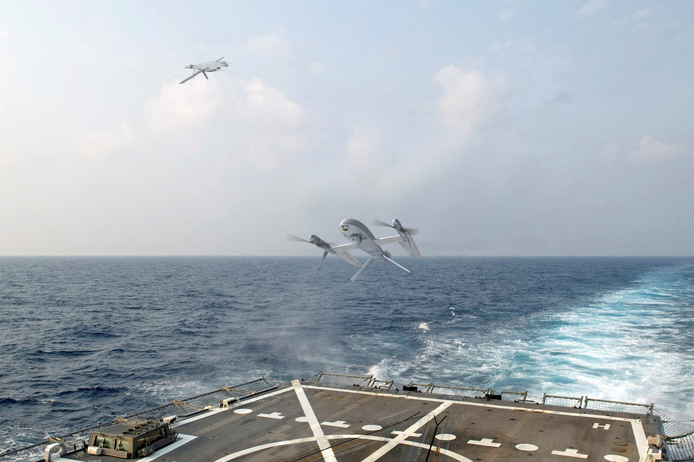Northrop Grumman Corporation has secured a contract from the Defense Advanced Research Project Agency’s (DARPA) Tactical Technology Office.
The contract aims to develop an innovative autonomous vertical takeoff and landing (VTOL) uncrewed aircraft system or UAS capable of operating from a Navy surface ship moving at sea.
The project, known as AdvaNced airCraft Infrastructure-Less Launch And RecoverY (ANCILLARY), will focus on designing a cost-efficient, modular platform that does not require a runway for operation. The aircraft will not rely on significant additional infrastructure apart from the onboard equipment.
Northrop Grumman’s ANCILLARY demonstrator will have the ability to carry a 27-kilogram (60-pound) sensor payload, providing endurance of up to 20 hours on station and a mission radius range of 100 nautical miles (185 kilometers). It will possess the capability to land on a ship even under adverse weather conditions.
“In collaboration with DARPA, Northrop Grumman will work to significantly enhance how future autonomous vertical lift aircraft will operate at sea and ashore,” Tim Frei, vice president of Research and Advanced Design at Northrop Grumman, stated. “The ANCILLARY program enables us to combine our digital engineering expertise with extensive knowledge and insights from past successes in developing and operating uncrewed vertical lift aircraft for the US Navy.”
In 2015, Northrop Grumman was contracted by DARPA and the US Navy to develop the Tactically Exploited Reconnaissance Node (TERN), a tail-sitter, flying wing aircraft with a twin nose-mounted contra-rotating propeller propulsion system. Demonstration flights were scheduled to begin in 2018. The program, however, seems inactive.
Northrop Grumman also consecutively developed for the US Navy the MQ-8B and its larger successor the MQ-8C Fire Scout, two unmanned helicopters based on the Schweizer 330 and the Bell 407 respectively. The MQ-8B was retired in October 2022, while the MQ-8C was deployed operationally for the first time on December 12, 2021, from the USS Milwaukee littoral combat ship.
DARPA’s ANCILLARY program
On June 22, 2023, DARPA revealed it had selected nine companies to design and produce demonstrators. In addition to Northrop Grumman, it also sought solutions from AeroVironment, AVX Aircraft, Griffon Aerospace, Karem Aircraft, Leidos, Method Aeronautics, Piasecki Aircraft, and Sikorsky.
“The objectives of the program are to develop a small UAS that takes off and lands vertically, like a helicopter, and flies its mission like very efficient winged aircraft, while carrying a significant amount of payload for a variety of missions,” said Steve Komadina, the DARPA program manager for ANCILLARY.
The ANCILLARY aircraft will be utilized for intelligence, surveillance, reconnaissance, and targeting missions. It will also support expeditionary operations for special forces and logistical missions.
“The small UAS size would allow many aircraft to be stored and operated from one ship creating a tactical beyond-line-of-site (BLOS) multi-intelligence sensor network capability,” DARPA explained in the program statement.

